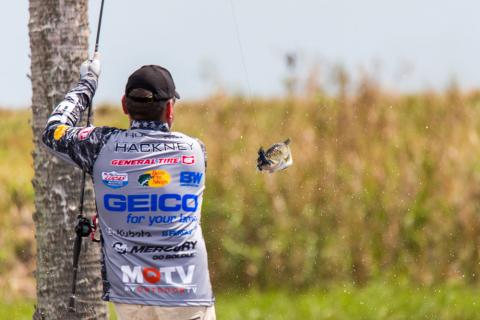Dana Rogers | Originally published in GameKeepers: Farming for Wildlife Magazine. To subscribe, click here.
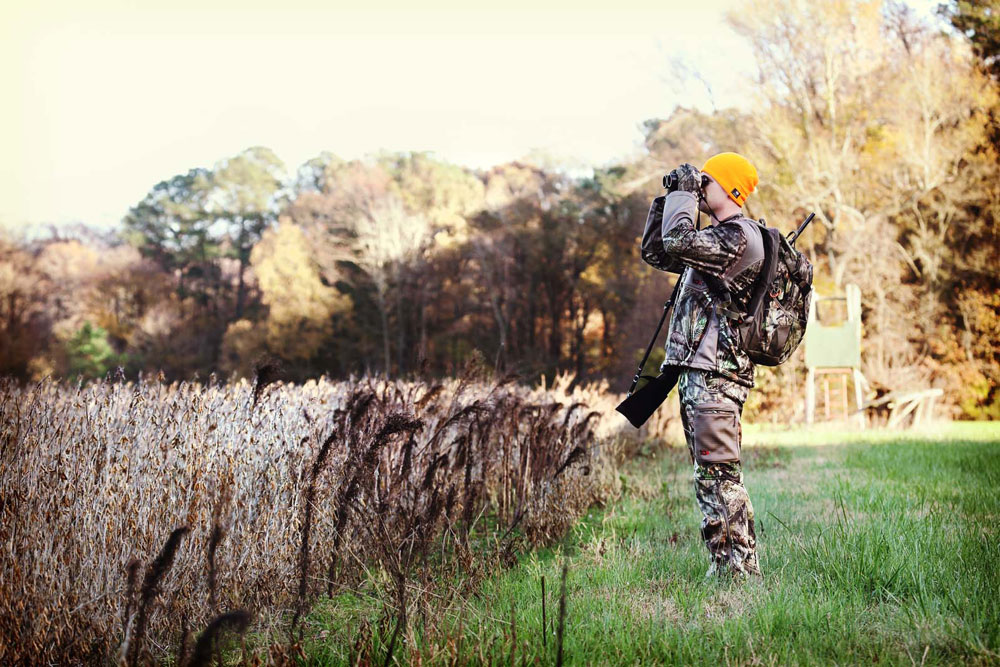
In late May, I had just returned from another deployment to Afghanistan and was excited to get back to the ranch to retrieve my trail cameras and look over the last remaining pictures. I’d hired a buddy of mine to check the cameras from time to time, but he had stopped checking them once most of the bucks had shed in mid-March. While retrieving the cameras and talking to my friend, he mentioned that he pulled a few and moved another, so I wasn’t overly concerned when I couldn’t locate two of the trail cameras I’d hung. That lack of concern totally changed when I reviewed the photos from March 28th. I couldn’t believe my eyes. I sat there staring at the photo in disbelief. There in broad daylight was a young man dressed in camouflage complete with a backpack, and he was holding a small shed antler. To say I was disappointed and dismayed would be an understatement.
This farm is posted very heavily and only my friend had permission to check my cameras and shed hunt. I phoned him to see if perhaps he’d taken a buddy in with him on a shed hunt….of course he hadn’t. My mind raced and my blood pressure rose. On March 28th I’d been in Afghanistan serving my country to help bring democracy and freedoms to the people of Afghanistan while protecting the rights and freedoms of Americans. While I was doing that, this guy was walking past a half dozen no trespassing signs and enjoying a beautiful day of shed hunting, on MY family’s farm…without permission. To top it off, after reviewing my maps and counting trail cameras, I was indeed missing two black Moultrie M-80s. The Moultrie camera that took the trespassers picture wasn’t black, was well camouflaged and not easily identifiable in the limbs of the tree. That may have been the saving grace from having another camera stolen and having no clue as to who had stolen it.
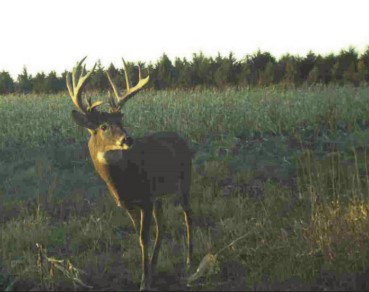
deer steward only to have it poached by a road hunter
out of his pickup truck at the edge of his property while
he watched from his treestand on the opening morning
of rifle season.
From talking to fellow gamekeepers throughout the US, I’ve learned this is far from an uncommon violation of the law, not to mention common decency and ethics. In fact, several of my friends have had far worse experiences than having $300 in trail cameras stolen or wondering where all the large sheds have gone. I’ve had sick feelings in the pit of my stomach after hearing shots after dark followed up by bucks that were regulars on trail camera suddenly vanishing. Two fellow gamekeepers shared recent experiences that may sound all too familiar to some.
“John” had been managing his farm for several years and was sitting in his treestand enjoying the fruits of his labor on the opening of rifle season. About 5 minutes before legal shooting light, a pickup pulled into the area a few hundred yards away. In the open country, he was able to clearly see the events unfold through his binoculars. After sitting in the pickup for about 15 minutes, the driver got out and immediately raised his rifle to shoot. The shooter didn’t own the land or have permission where his target animal was standing, and in addition to that violation, he shot across a public roadway. After the shot, the pickup immediately drove about 200 yards down the road and into a field. Within 2 minutes of stopping, the truck left the cornfield and drove away.
When a lone doe ran by John coming from the direction of the pickup, John’s fears were only heightened. He’d been getting several pictures of a true giant over the past several weeks and after passing him up for several years, he hoped to tag him during this season.
“Tom” is another friend who has taken on the mantle of “gamekeeper” on his family’s ranch. The whitetails in his area routinely travel several miles, so he’s not immediately concerned when a “regular” on his trail cameras doesn’t show up for a few days. That is until he kept seeing the pickup of a known violator driving around his family’s ranch. A few days later, he found a fresh gut-pile next to one of the properties boundary roads, and he knew something bad had gone down.
If any of these scenarios are familiar to you or you are concerned about the possibility of a similar situation hitting your property, I’m sure you’ve thought about how to mitigate the risk potential and discourage illegal activity. Here are a few ways to help avoid these situations or at least help uncover what happened and help law enforcement punish those offenders.
Keep Out!
This one is a no-brainer but having quality “No Hunting,” “No Trespassing” and other signage on your property boundaries is an absolute must and the first step in letting others know that you care about protecting your hunting areas. Some states have specific laws on distance and penalties but keeping your signs new and in good shape tells a potential trespasser or poacher that someone frequents the area.
Screening Cover
By planting thick rows of conifers, shrubs or other trees that grow fairly quickly, you can help mitigate your risk by keeping passersby from easily spotlighting or viewing the wildlife that make your property their home. Reducing the temptation to do something wrong is just common sense – “out of sight, out of mind.” If you can’t afford it or simply can’t wait the necessary time for those plantings to grow, I’d suggest planting tall screening cover like Sudan Grass, Egyptian Wheat or native grass plantings like Switchgrass, Indian Grass or Big Bluestem. I’ve also used strip disking practices to take advantage of our native seed bank to create a visual barrier that’s been largely effective in blocking the view of the casual road hunter.
Patrol It
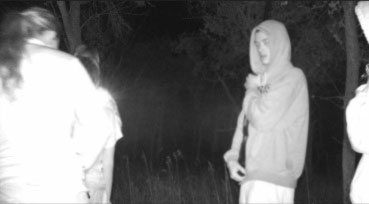
that he hadn’t put there. Fortunately, the perpetrators
were caught because the camera held images of each
of their faces. It also clearly showed they were armed,
traveled there only during dark and had also illegally
baited the site.
Be seen and make sure people know you care and are there to protect your assets and the habitat you’ve created. The area I manage has improved dramatically over the past several years, but early on in my efforts, I had to constantly drive the perimeter roads along my family’s ranch just to let people know I was there. A tactic I dubbed “keeping honest people honest” was looked at strangely, but other than a few snide comments by some would-be violators, it was extremely successful in reducing the road hunting traffic.
Video Surveillance
There’s probably not a gamekeeper reading this that doesn’t already own multiple trail cameras. They aren’t only great for getting pictures of the deer and other wildlife on your property; they are fantastic for catching trespassers and poachers in the act. They are also invaluable tools to help provide law enforcement direct evidence of a violation. Word travels fast and if people know you have multiple trail cameras hidden and secured to monitor your property, they’ll definitely think twice about choosing your property to trespass on.
Don’t make the same mistake that I did last year, choose a camera that is well camouflaged and take the time to hide it from prying eyes. By mounting it as high as you can reach and pointing it down onto the trail, you’ll still get great pictures and the cameras will be out of the immediate line of sight of anyone else. Low glow and black flash are also a must for perimeter camera traps. Some of the top-end models even have the ability to e-mail photos via cell towers or onto a nearby base station separate from the camera.
I know a few gamekeepers who have had so many issues with trespassers and poachers, they have actually been forced into actively setting traps specifically for their prosecution. They’ve taken up tactics like putting “bait sheds” in plain sight or “bait cameras” in plain view on their posted land that are then monitored by multiple other well-hidden active cameras. You could also consider contacting your local DNR and ask them to set up a decoy sting operation if the situation warrants. Unfortunately, it’s often not “IF” one of these scenarios will play out on your property but “WHEN.” It’s up to the individual landowner, of course, but you need to be thinking about what you’ll do and how you’ll deal with the situation before it rises.
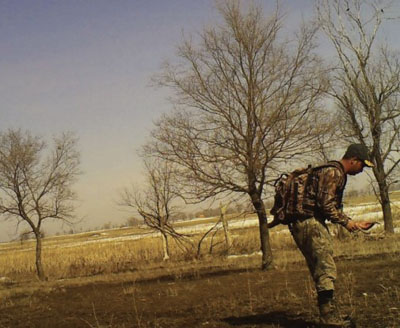
poacher. The investigation follower him through three
states and resulted in him being cited for multiple
violations. He sold the sheds online for profit and was
extremely brazen in his carefree disdain for landowners’
rights.
Personally, I would rather talk to people and let them know my thoughts, intents and expectations. Then, if they fail to abide by those, the consequences are clear. There are such things as honest mistakes, but if you prepare your property and lay it out in a manner to discourage trespassing and poaching, you can help alleviate these situations.
I like to believe that most people are honest and respectful, but there is an element out there that has absolutely no respect for private property or wildlife laws and why they are there in the first place. If you run into this type of element, you aren’t going to discourage them by just talking. If they are so brazen as to deliberately trespass or spotlight and poach, it’s not their first rodeo, and they are likely a habitual offender. Such was the case with all three of the scenarios I mentioned above.
Evidence to Prosecute
In addition to having trail camera photos of a trespasser, or being an eyewitness to the actual event, there are other ways to help identify a perpetrator. I e-mailed the photo of the trespasser to just about everyone I knew in the area. Then I posted it on several hunting-related forums and on Facebook. There is actually a site dedicated to outing and prosecuting poachers and trespassers. In this case, I had the trespasser identified and verified independently by multiple people within three hours of searching. Seems this late 20s non-resident from western Minnesota loves to travel to distant states (several) to “shed hunt” each spring. He boasted he’d found 22 “big bones” on his own shed hunting page…in my area…on the date my camera put him there.
Other unscrupulous activities were also uncovered during a three-state investigation, and he was also sighted in North Dakota. Other charges are pending.
What if you don’t have a trail camera picture? If you witness the violation, get your own photos by carrying your own camera or using the camera on your cell phone. Make sure to get a picture of their face, vehicle and license plate. If you feel comfortable confronting them, ask for names, license numbers and contact information. Be very careful though, this is likely going to be a heated emotional issue, and people will be armed, so it may be safer to take down the information and allow the Conservation Officer or local Sheriff to handle the situation.
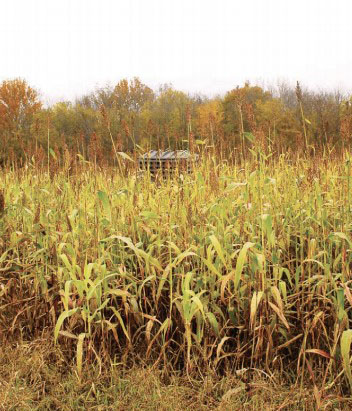
help screen your property from view—out of sight,
out of mind. Here, Blind Spot is used to conceal an
ambush site, but it is also designed perfectly for a
quick fix to help prevent road hunters or others from
being able to see into your property.
The Outcome
John contacted his local C.O. and described the strange trespassing incident. Coincidentally, the C.O. had just been to a local taxidermist who’d received a whitetail buck scoring over 200 gross B&C points that matched the description he gave and dozens of trail camera photos he possessed from his managed property. Upon further investigation and prosecution, the poacher was convicted of illegally taking the deer on an invalid landowner’s permit. He paid a criminal fine of $1,000, and a civil fine of $5,000 because of the score of the antlers of this deer. His license was also revoked.
Tom received a photo of the proud “hunter” through a third party. He immediately recognized it as a deer he’d seen dozens of times on his property that matched his trail photos exactly. A subsequent investigation resulted in the non-resident hunter being ticketed for poaching the deer with an invalid license from another county. He had also obtained licenses for another unit the past five years and had been hunting illegally the entire time.
The ND native was found guilty of two charges of hunting without a non-resident big game license ($1,360.00 total). A 30-day jail sentence was suspended and his license was revoked for one year. Gamekeepers invest hundreds of hours and thousands of dollars into their “little pieces of heaven” each year. We benefit the land, the wildlife, and the entire diversity of the area. These improvements not only attract and increase wildlife in these areas, but they also attract the attention of others. Sometimes those individuals don’t care about laws, ethics, or common courtesy. If you plan ahead you can help diminish the chances of intrusion. When those methods fail, it often becomes necessary to hold those violators accountable for their actions.















